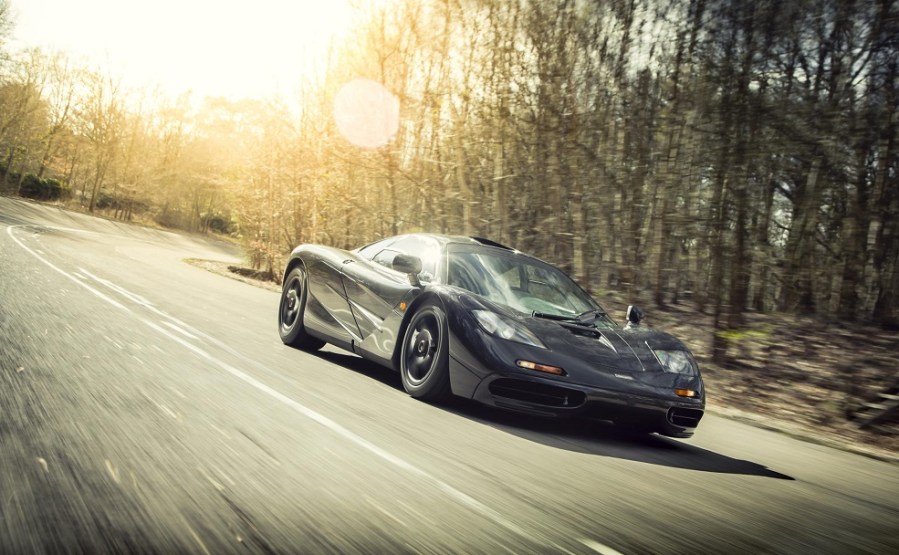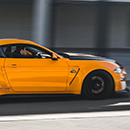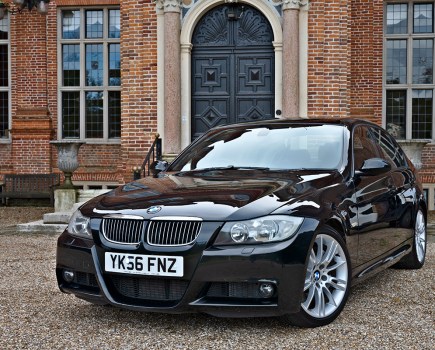Except there’s a twist to our top 10 British car icons list. The first five represent the hilariously expensive and the final five represent the cars with huge modifying potential.
The phrase ‘British Motor Industry’, once something that elicited great national pride, is often bandied around as a bit of a joke these days. It flares up pub bants with memories of the woeful Morris Marina and Austin Allegro, along with rattly Triumph Heralds, clapped-out Delboy Reliant vans and rusty Land Rover Freelanders with extravagantly weeping head gaskets. But let’s not allow that sort of broad-brush negativity spoil things: countless iconic and magnificent cars have been built in Britain, from the Mini to the E-Type, the MGB to the Lotus Seven and so many more besides; there’s a reason why all the F1 teams want to be based in Britain, why venerable brands like Morgan survive in their little timeworn niches, why foreign ownership hasn’t diluted the magnificence of Rolls-Royce or Bentley. Britain is, and always has been, bloody good at making bloody good cars. So here we’ve gathered together a top-ten of our favourites – the stars, the legends, the ones we all want to take home and have a little naughty fun with. And there’s a twist: the first five are the icons, the unattainable and heinously expensive cars that most of us will have to settle for just having a bedroom-wall poster of… but the next five are the mod masters, cars that you can go out and find for reasonable money. Cool, fun, interesting and quirky British-built cars, just crying out for some entertaining mods. Ladies and gentlemen, pour a quick cup of Earl Grey and start your engines, it’s our top 10 British car icons.
Top 5 hilariously expensive British cars
![]()
McLaren F1
In the supercar arena of the early 1990s, various manufacturers had been teetering and tap-dancing around the 200mph mark: Ferrari’s F40 could do 201mph, Porsche’s 959 wasn’t far behind at 197mph, and in 1992 Jaguar took the ‘fastest production car in the world’ title by managing to squeeze 212mph out of the XJ220. But then McLaren casually strolled in with its new F1, gave everyone a bit of side-eye, stubbed out a ciggie, and chalked up a top speed of 240mph. This was, frankly, completely absurd. There was no way any other car-maker could come close to that.
Of course, McLaren didn’t just pop out of nowhere with this; behind the scenes, in top secret, they’d been endurance-testing a super-high-performance variant of the BMW S70/2 V12 engine, cunningly hidden inside an E34 M5 Touring mule. The project’s mastermind, ex-Formula One engineer Gordon Murray, envisioned a pioneering machine with a central driver’s seat, the world’s first road car to have a carbon fibre monocoque, built without compromise for ultimate efficiency and performance. The engine bay was infamously lined with gold leaf, purely for its thermal properties. The bespoke toolkit was cast from titanium. And the whole point of the F1 was that it could be everyday-usable, as well as being the fastest car in the world. It had a 10-disc Kenwood audio system, and air-con, and even a tailored golf bag. This wasn’t just a supercar, it was the ultimate road car. And in every important way, it still is.
Price today: £15,000,000
![]()
TVR Speed 12
TVR was always known for its uncompromising builds, fusing outlandish and otherworldly curves with shouty, angry engines, and there was never space for anything as lame as ABS, airbags, or traction control. And the Speed 12? This was the most uncompromising of the lot. Taking the slinky Cerbera as a base, it formed a test-bed for a potential GT1 racer – something that never came to fruition; the Speed 12 GTS did compete in a few rounds of the 1998 FIA GT1 Championship, but the rules changed rendering the car obsolete. The sole survivor exists now as a bonkers and unique creation; under that rampantly slatted bonnet lurks a 7.7-litre V12 – effectively two Speed Six units on a shared crank, but the whole is far more than the sum of its parts – reputedly good for over 1,000bhp, although official figures were never forthcoming. TVR’s dyno was only rated to 1,000bhp and the car kept ripping it to pieces.
TVR’s then bossman, Peter Wheeler ultimately concluded that the Speed 12 was undrivable as a road car, it was just too powerful. So the whole project was scrapped. However… in 2003, TVR mischievously put an advert in Auto Trader for a Speed 12, registered W112 BHG, saying that they’d rebuild one of the decommissioned prototypes and sell it to a TVR fan. The buyer had to be interviewed personally by Wheeler to make sure they were suitable and, since the original bodies had all been destroyed, W112 BHG used a genuine GT racer body. As TVRs go, this is very much the rarest of the rare. Although if you’ve got deep pockets, a company named TR Supercars has also recently fabbed-up a modern twin-turbo prototype of its own…
Price today: £1,200,000 (TR Speed 12 Turbo)
![]()
Lotus Evija
Lotus has a long and distinguished history of crafting desirable and swift machines, fusing sumptuous design with eager performance; OK, the older ones usually smell faintly of glue and have bizarre gearbox choices or Marina door handles, but you can’t put a price on their iconic cachet.
So here’s a polarising thing. If you’re the sort of purist who feels that the very essence of the added-lightness Lotus ethos resides in a sylph-like Elan or featherweight Elise, the idea of a 1,680kg goliath wearing Chapman’s iconic nameplate may stick in the craw. But try to forget about the weight – it’s the power-to-weight that’s crucial here. This mould-breaking hypercar is an EV, powered by four electric motors, one in each wheel. Peak power is an eye-watering 1,970bhp (yes, you read that correctly), enabling a 0-62mph dash in well under 3 seconds, 0-186mph in under 9 seconds, and a top whack comfortably beyond 200mph. We’re looking at a full carbon chassis, magnesium wheels, carbon-ceramic brakes, the works. Is it a traditional Lotus? Er, no, not really. But if this sort of lunacy is the future of the brand, then count us in with a boisterous ‘Pip pip, tally ho’.
Price today: £2,000,000
![]()
Ariel Atom 500
The Ariel Atom is a hilarious creation. Whoever thought of bolting the engine from a Honda Civic Type R onto the back of a tangle of scaffolding to form an ultralight road-legal track car was some kind of twisted genius. These things have become modern icons among performance car enthusiasts, as they’re built entirely without compromise to be ludicrously rapid at all times; there’s a fella who we regularly see doing his weekly shop at the local Sainsbury’s in a Nomad (which is essentially an Atom on stilts), tying the shopping bags to the rollcage, and that’s heroic behaviour.
And even more ingenious than the standard Atom formula, and far more twisted, is the Atom 500. This features a bespoke 3.0-litre V8 which is basically two Suzuki superbike engines running off a common crank (sort of – it’s fiendishly complicated), and this gives it 475bhp. In a car that weighs 550kg. How bonkers is that? It’s got a power-to-weight ratio of 864bhp-per-tonne, which is double that of a Bugatti Veyron, and it’ll do 0-62mph in 2.2 seconds. It’s basically a GP2 race car with number plates, and in a world where EV hypercars are reframing everything we thought we knew about acceleration, this car comprehensively proves that petrol engines can still play that game too. We love that this sort of thing is allowed.
Price today: £200,000
![]()
Jaguar XJ220
There’s a lot to love about Jaguar’s XJ220, from its ludicrous speed capability and supercar-royalty status to the magnificent design of its pretty body. But the most intriguing thing about the XJ220 was that it had completely the wrong engine, and that really annoyed people. When the notion of a new Jaguar V12-powered supercar with all-wheel-drive was mooted in 1990, the waiting list was four times oversubscribed with 1,400 customers paying a £50,000 deposit… but then quite a few of them demanded their money back when Jaguar suddenly realised that the V12 couldn’t meet emissions regs, as well as being too heavy, and the AWD system would be too complex, so they decided to make it RWD and V6-powered instead. A lot of potential buyers got quite cross about that.
However, those people really missed out, as the XJ220’s twin-turbo V6 was a howling lunatic of a thing. Derived from the Austin Rover V64V – as seen in a different setup and state of tune in the Group B Metro 6R4 rally cars – it allowed the XJ220 to be, briefly, the fastest production car in the world at 212mph. Produced in collaboration with Tom Walkinshaw Racing, the project was aimed squarely at the Ferrari F40 and the Porsche 959, offering comparable performance combined with much more luxurious interior appointments.
The XJ220 is a proper hero: it may have a Metro engine and Rover 200 taillights, but it really was a world-class demonstration of British ingenuity.
Price today: £450,000
![]()
Top 5 British cars with modifying potential
Ford Escort XR3i (Mk4)
There were a lot of fast Fords we wanted to slot in here, but given that most RS and Cosworth models were actually assembled elsewhere in Europe, we had to cast our minds back to the original boy racer. Scourge of the seafronts, legend of the traffic light grand prix, the XR3 was a true 1980s everyman hero; resplendent in its cloverleaf alloys and jazzy stripy seats, with boisterous bolt-on spoilers and the obligatory spotlights, it was everything a Ford fan wanted at the time, pre-modified by Ford and ready to rock.
Since the Mk3 platform was so radically different from the rear-drive Escorts that came before it, Ford played a blinder by deciding to launch the sporting variant at the same time as the everyday models. The XR3 shared the lesser three-door’s bodyshell, and added ventilated front discs behind characterful cloverleaf wheels, along with the in-your-face spoiler and body addenda. The 1597cc CVH had a twin-choke Weber carb and produced a handy 96bhp, enabling it to tear to 60mph in a smidge over nine seconds. In the early days of the hot hatch era this was heady stuff, and the buying public lapped it up – over 11,000 XR3s were sold in 1981 alone, and the following year Ford improved it further by adding a five-speed all-synchro gearbox. In 1983, Ford’s Special Vehicle Engineering (SVE) department decided to have a crack at it – the result was the XR3i, the extra letter denoting the new addition of Bosch K-Jetronic fuel injection. This enabled a hike to 105bhp, the 0-60mph time dropping to 8.5 seconds, and the suspension was revised and lowered by SVE along with gear ratios being altered. Now the hot Mk3 was a genuine 120mph car, and when the Mk4 XR3i arrived in 1986 with its smoother styling, the world had a new true-blue hot hatch hero.
Price today: £8,000
Top 5 mods: Koni adjustable coilovers, Magnex exhaust system, K&N induction kit, Kent cams, rear window louvres
![]()
Vauxhall Astra VXR Nurburgring
Darling of Ellesmere Port, the Vauxhall Astra has been a staple of British street furniture for as long as anyone can comfortably remember. And of course we’re not just recommending a base-model 1.6 here. We’re not even touting the hooligan-spec VXR. No, the one we’ve really got our crosshairs locked onto is the VXR Nürburgring Edition.
Never before has a single factory-fitted bolt-on mod changed a car so dramatically. The regular Astra VXR, launched in 2005, was already a fairly manic thing, with 240bhp-odd and an aggressively firm chassis setup. The Nürburgring Edition was arguably, on paper, something akin to a cynical marketing exercise – a set of white wheels and some stickers, along with a modest 15bhp power hike. Could that really justify the £1,575 premium over the standard version? Yes, very much so – and it’s all down to the Remus exhaust that Vauxhall fitted, which pops and crackles like a rally car on the overrun, and blasts what sounds like shotgun fire out of the back end every time you change gear. In a world of fashionable pop-and-bang maps this may not sound all that impressive, but let’s not forget that Vauxhall let these shouty little creations off the forecourt with a warranty. Fingers in your ears, grandpa!
Price today: £5,000
Top 5 mods: KW coilovers, Whiteline ARBs, K-Sport big brake kit, Regal inlet manifold, Forge intercooler
![]()
MINI Cooper S (R53)
Yep, the badge may be owned by BMW, but these things are still proudly hammered together in Britain. And while there are a lot of people out there who say ‘it’s not a proper Mini,’ simply because modern MINIs are quite a lot bigger than classic Minis were, such people can be safely ignored. All of the correct DNA is in place, it’s built in Oxford, and it’s as appropriate as mass-market transportation as the original Mini was back then. Times change. We need stuff like airbags and decent-sized disc brakes now, the new MINI allows these to fit, that’s why they’ve grown up a bit.
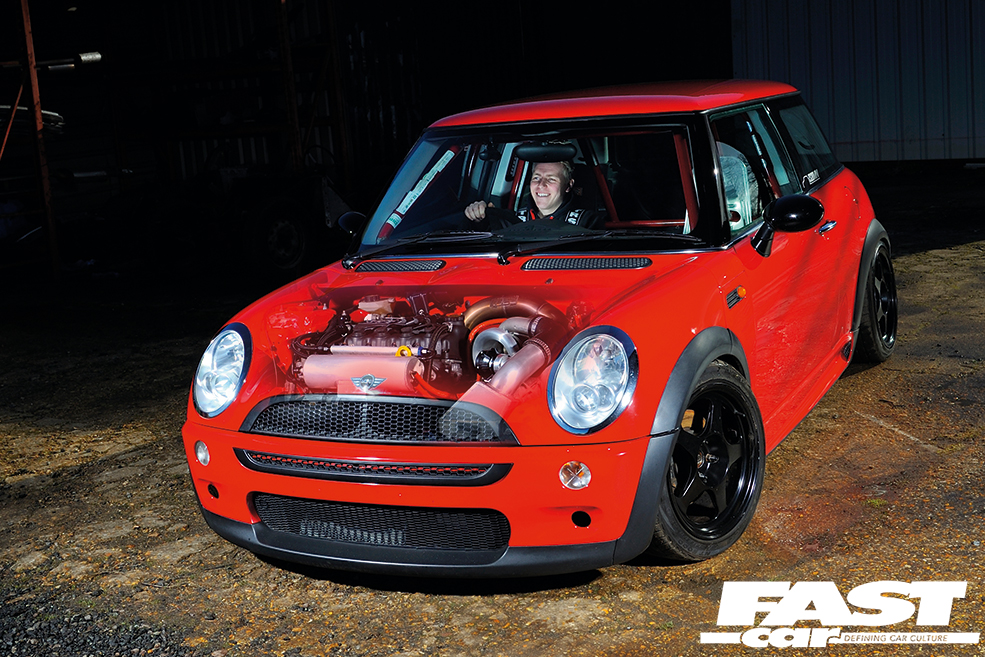
Anyway, the cream of the crop was the perky little R53 Cooper S. 2nd-gen versions were turbocharged, but it’s the original 1st-gen Cooper S that turned a generation of fledgling tuners onto the thrills of supercharging. That meant when it came to stuffing it with a few more horses, something as simple as a reduced ’charger pulley would give you oodles more torque and even improved economy – how smart is that? – and, as countless owners have since discovered, a set of coilovers and a chunky rear anti-roll bar turned it into a balls-out track weapon. They’re getting really quite affordable now too, plus there’s plenty of them about and the aftermarket for them is just huge.
Price today: £3,000
Top 5 mods: Reduced supercharger pulley, Orranje Stealth Intake, non run-flat tyres, lightweight wheels, coilover suspension
All mods available from Orranje Performance Ltd orranje.co.uk
![]()
Honda Civic Type R EP3
There are few performance bargains quite as alluring today as the EP3-generation Civic Type R. And yes, we know that Honda is a Japanese company and we’re creating a top 10 British car icons list here – but did you also know that all the EP3s were built in Swindon? It’s true. In fact, even the JDM-spec cars (with their Championship White paint and LSDs) were built over here and shipped to Japan. So yes, this iconic Japanese tearaway is a true-blue Brit.
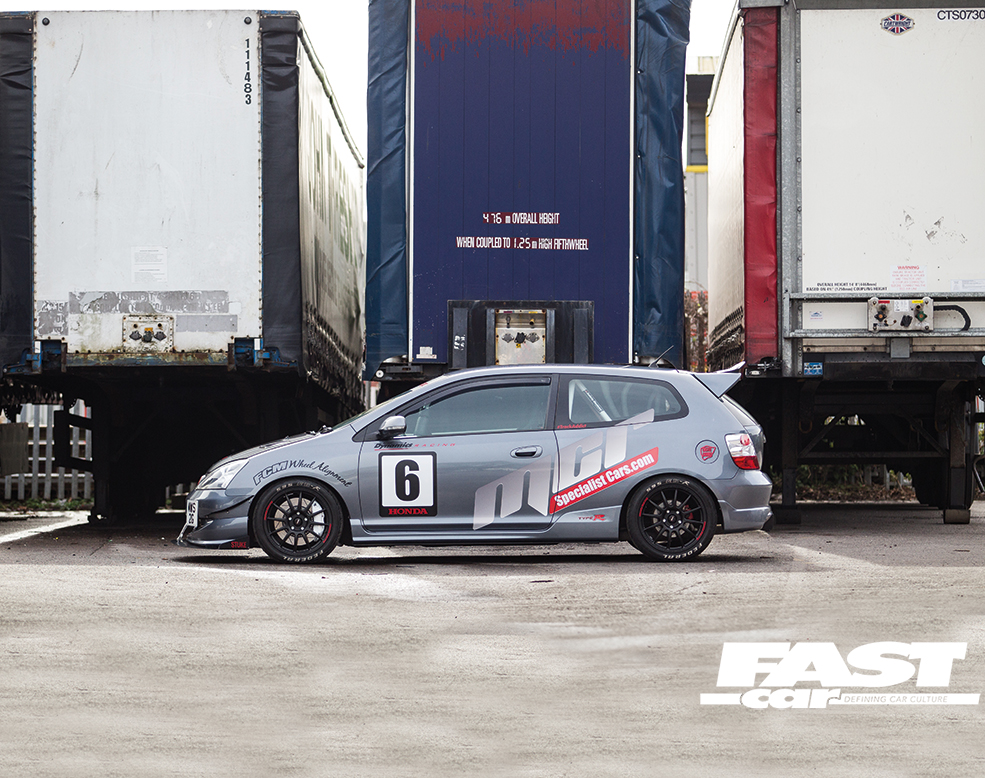
The legacy of the Type R models is a well-trodden path within these pages. The EK9 had been a Japan-only model, but the EP3 brought the Type R lunacy to the European masses: its manic K20A2 motor offered 197bhp and, while there wasn’t a lot of torque low down, it was all about the revs; VTEC kicked in at 5,500rpm, and from then on the scenery went distinctly blurry. The handling was wonderfully agile (and facelifted cars had revised steering, which had been a bit woolly on earlier cars), and the aftermarket ensured that these hot hatches were very well catered for: you don’t necessarily need to throw a lot of power at an EP3, as your point-to-point times are easily reduced with chassis and suspension tweaks. Although if big power is your bag, the K20 responds very well to supercharging…
Price today: £3,000
Top 5 mods: SuperPro ARBs, Hardrace camber arms, ITG induction, Skunk2 drop-in cams, M2 side-kicker exhaust
![]()
Bentley Turbo R
The Turbo R is no ordinary Bentley. Whereas many manufacturers may deploy the letter ‘R’ on their hot models to mean ‘Racing’ (Honda do it, and Skoda, and assorted others), in this instance it stands for ‘Roadholding’. You see, this car’s predecessor, the Mulsanne Turbo, was an old-money scoundrel of a thing: a mighty turbo strapped to the equally mighty 6.75-litre V8, with the ageing chassis design expected to cope. This went exactly as well as you’d imagine it would. But the Turbo R was a significant evolutionary step: taking all of that amusing horsepower and treacle-rich torque, the chassis was substantially revised to deal with it. The Citroën-licensed hydropneumatic suspension setup was augmented by a 50% increase in roll stiffness, thanks to much thicker anti-roll bars and increased damping rates. The rear subframe was triangulated with a Panhard rod, and all of this was allied to the Mulsanne’s soft spring rates. Why? To ensure that it could handle like a hooligan on demand, while still being as comfortable and sumptuously cosseting as a Bentley should be when you’re just wafting around. This Jekyll-and-Hyde approach was a roaring success, and the Turbo R has gone down in history as something which really was just a jolly good idea. With close to 300bhp, the acceleration almost defies physics; the chassis is unexpectedly agile, and it’s got all of the luxurious accoutrements you’d expect of a Bentley. What could possibly go wrong*?
*er… quite a lot actually. And it’ll all be very expensive.
Price today: £9,000
Top 5 mods: Hi-Spec big brake kit, Quaife LSD, custom Powerflow exhaust, custom Air Lift Performance suspension, tweed jacket

